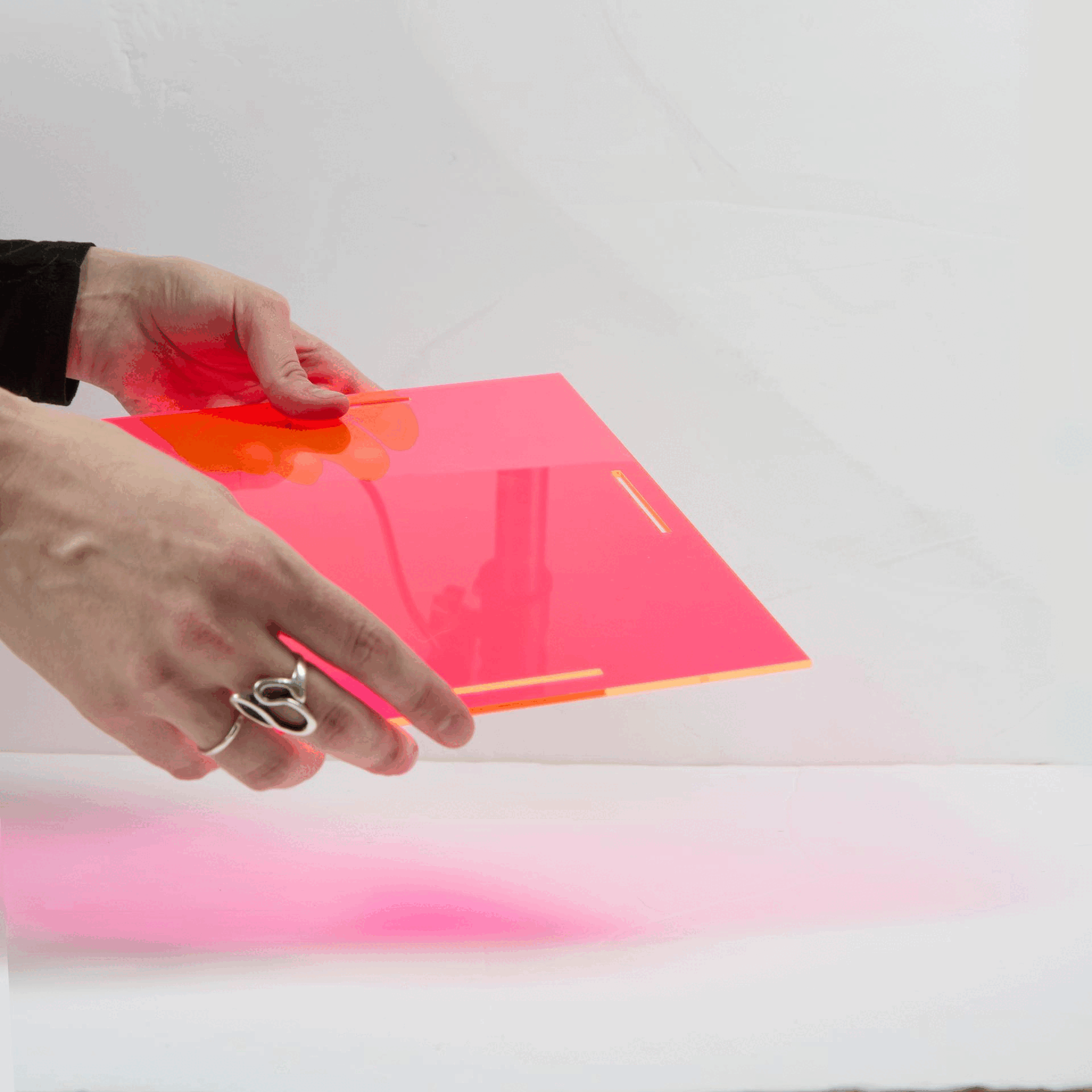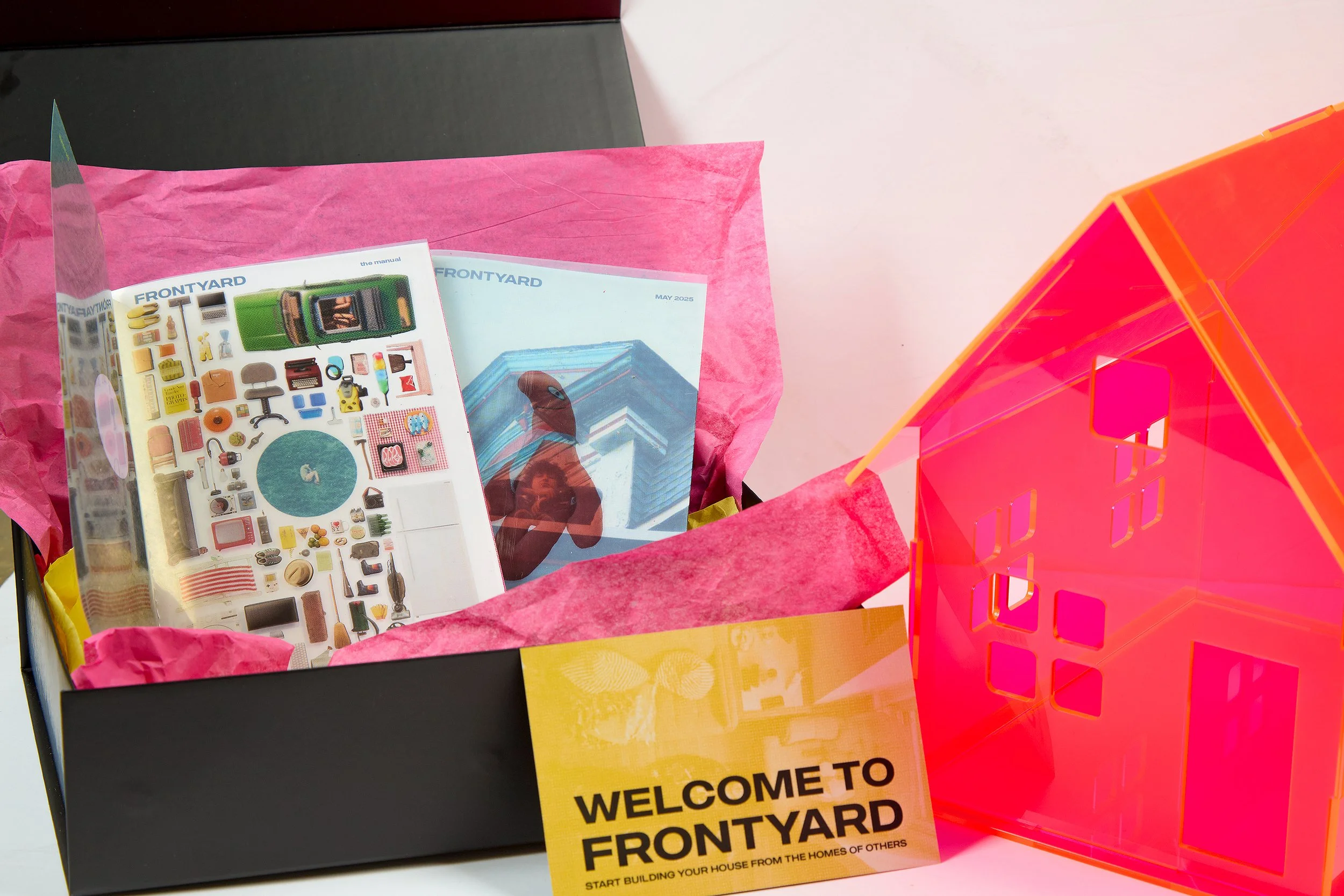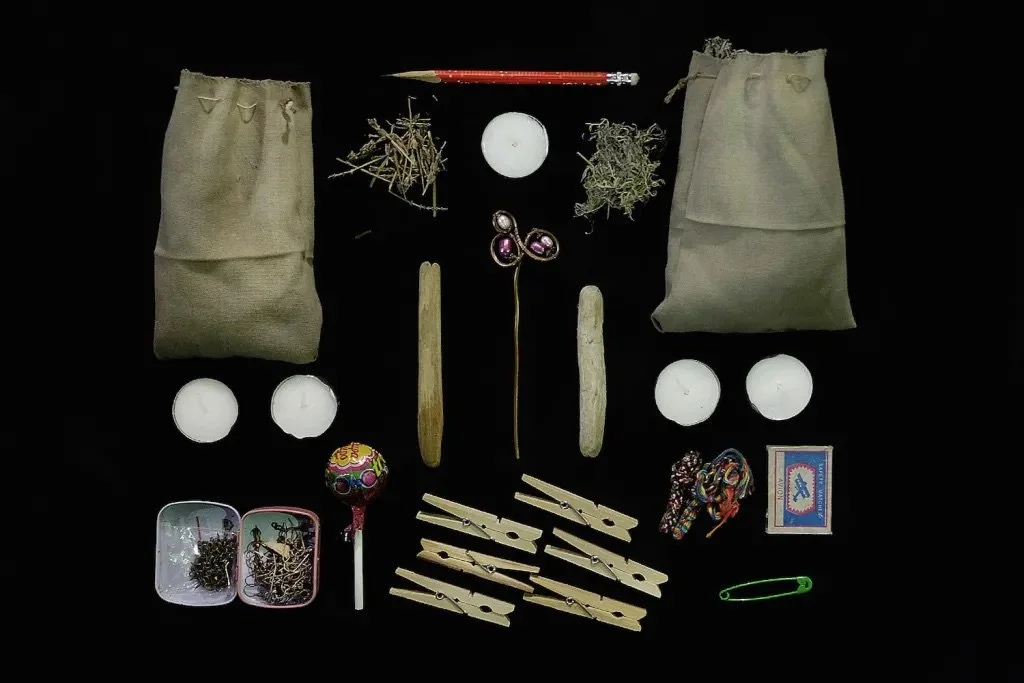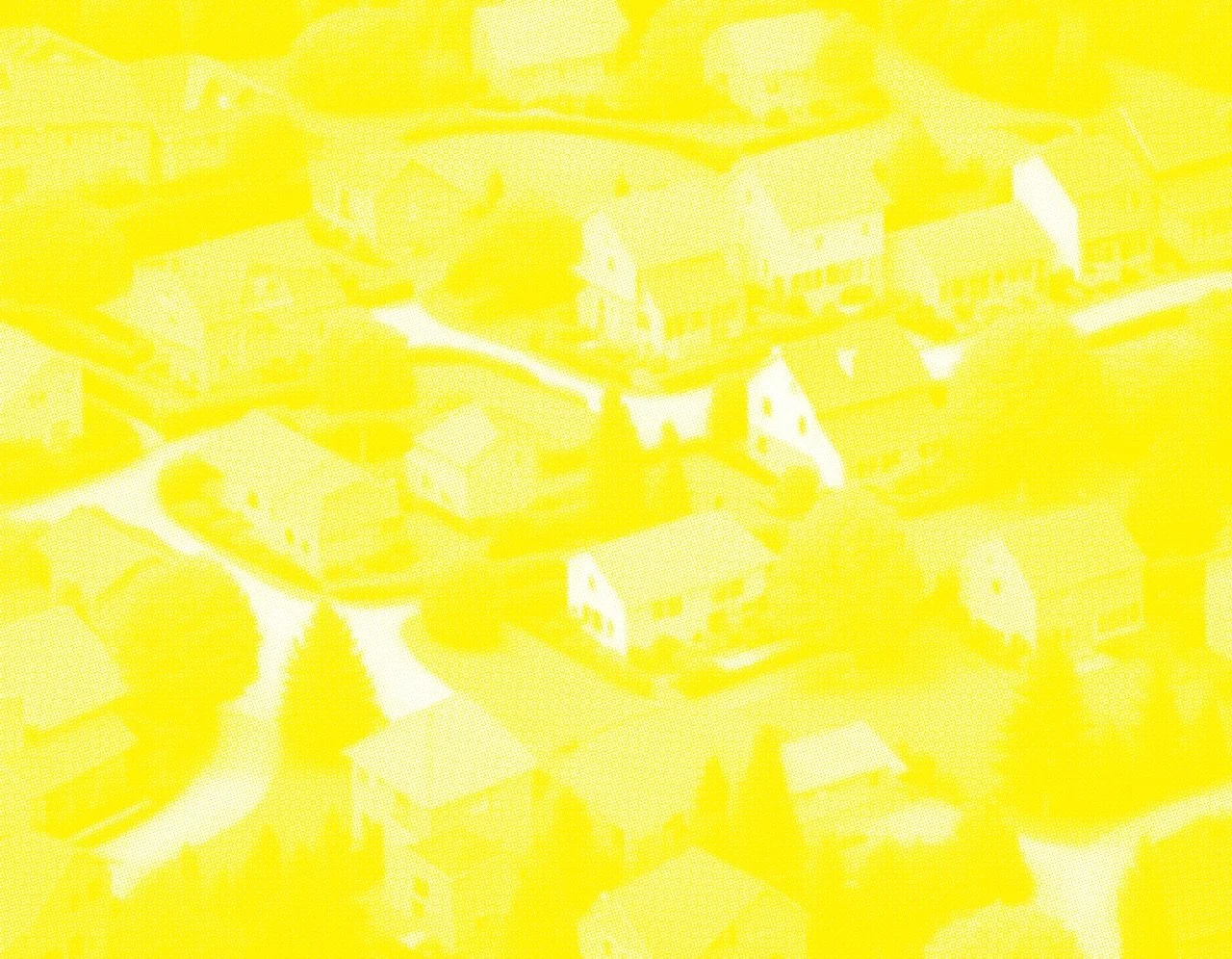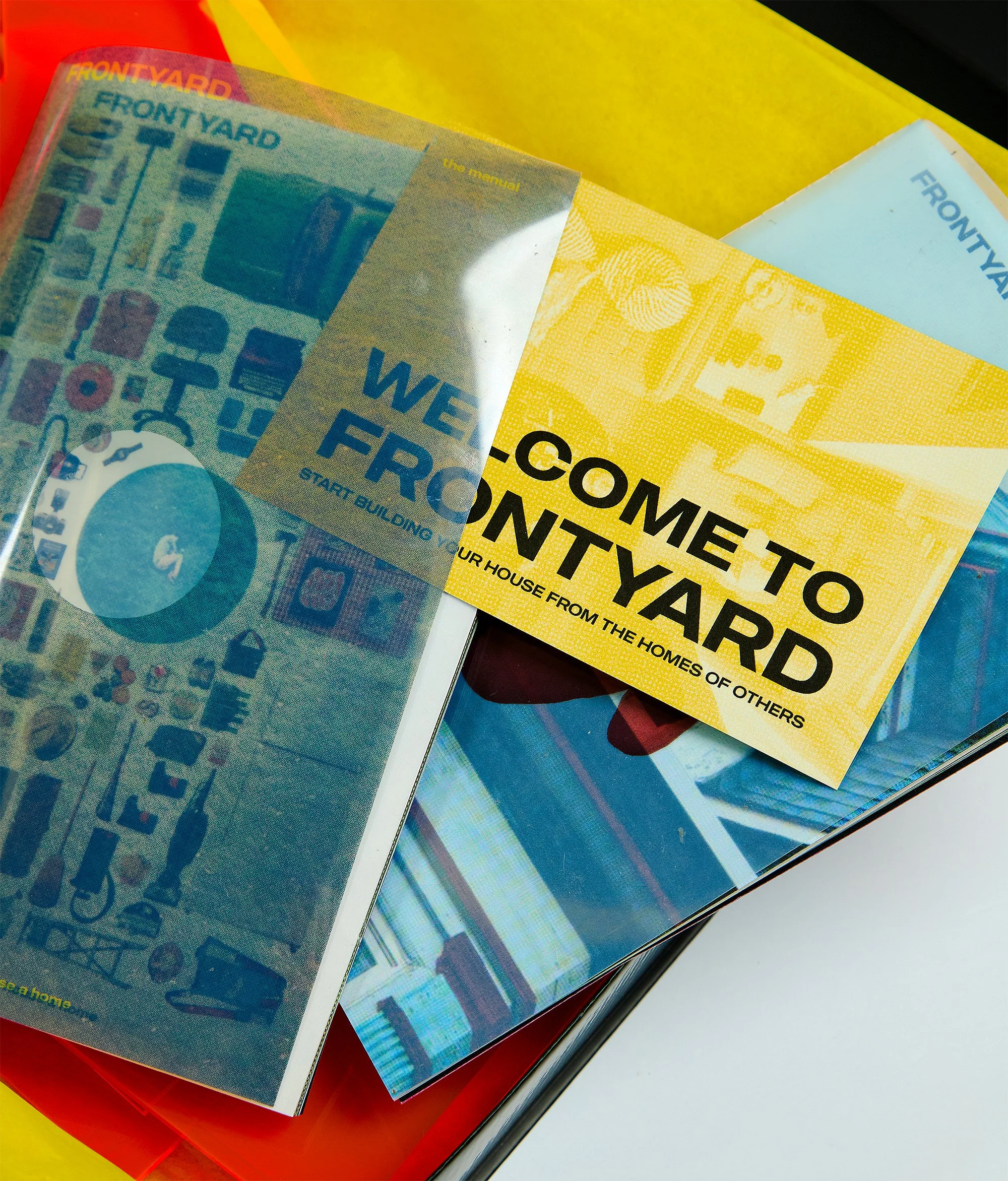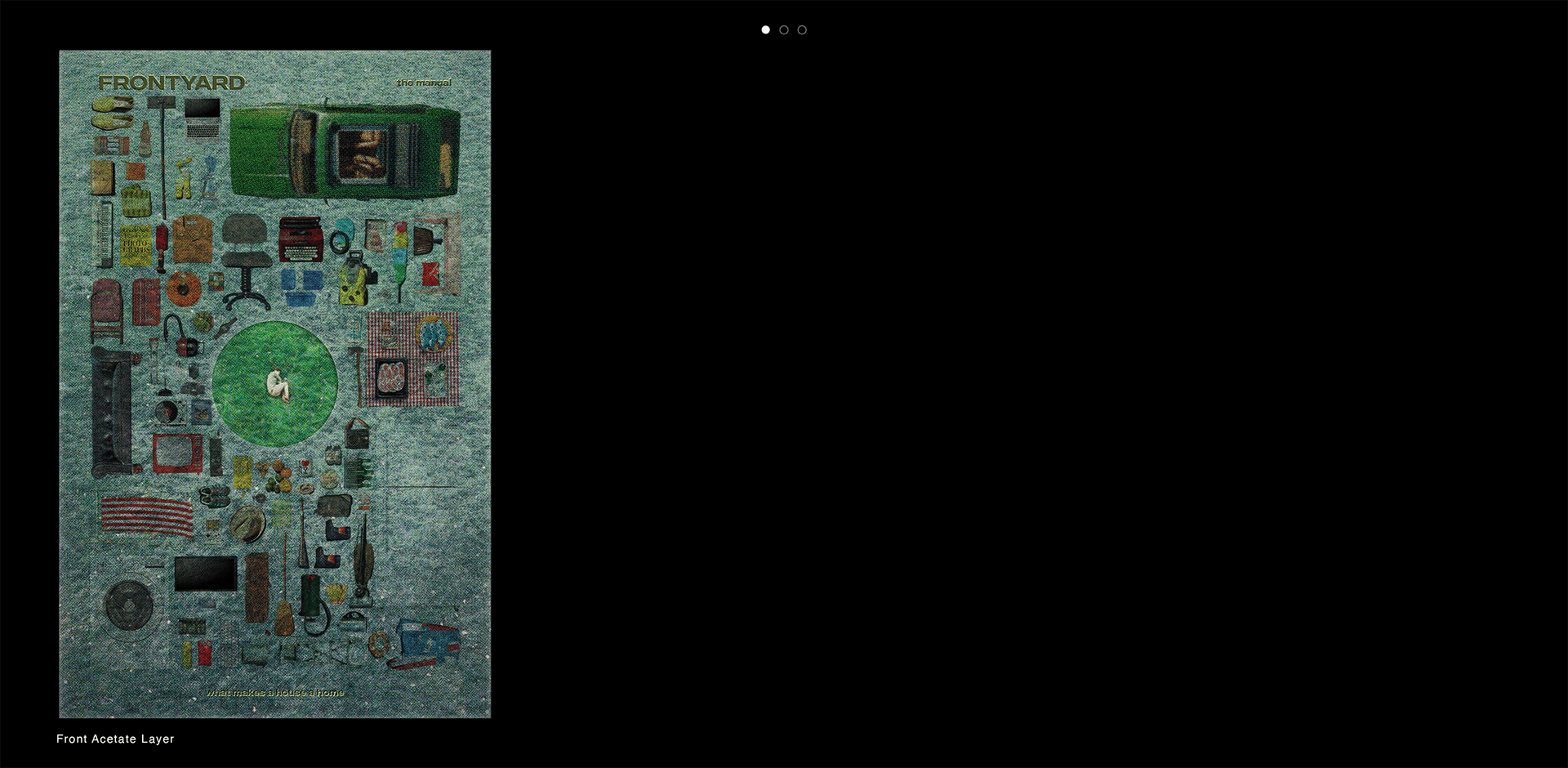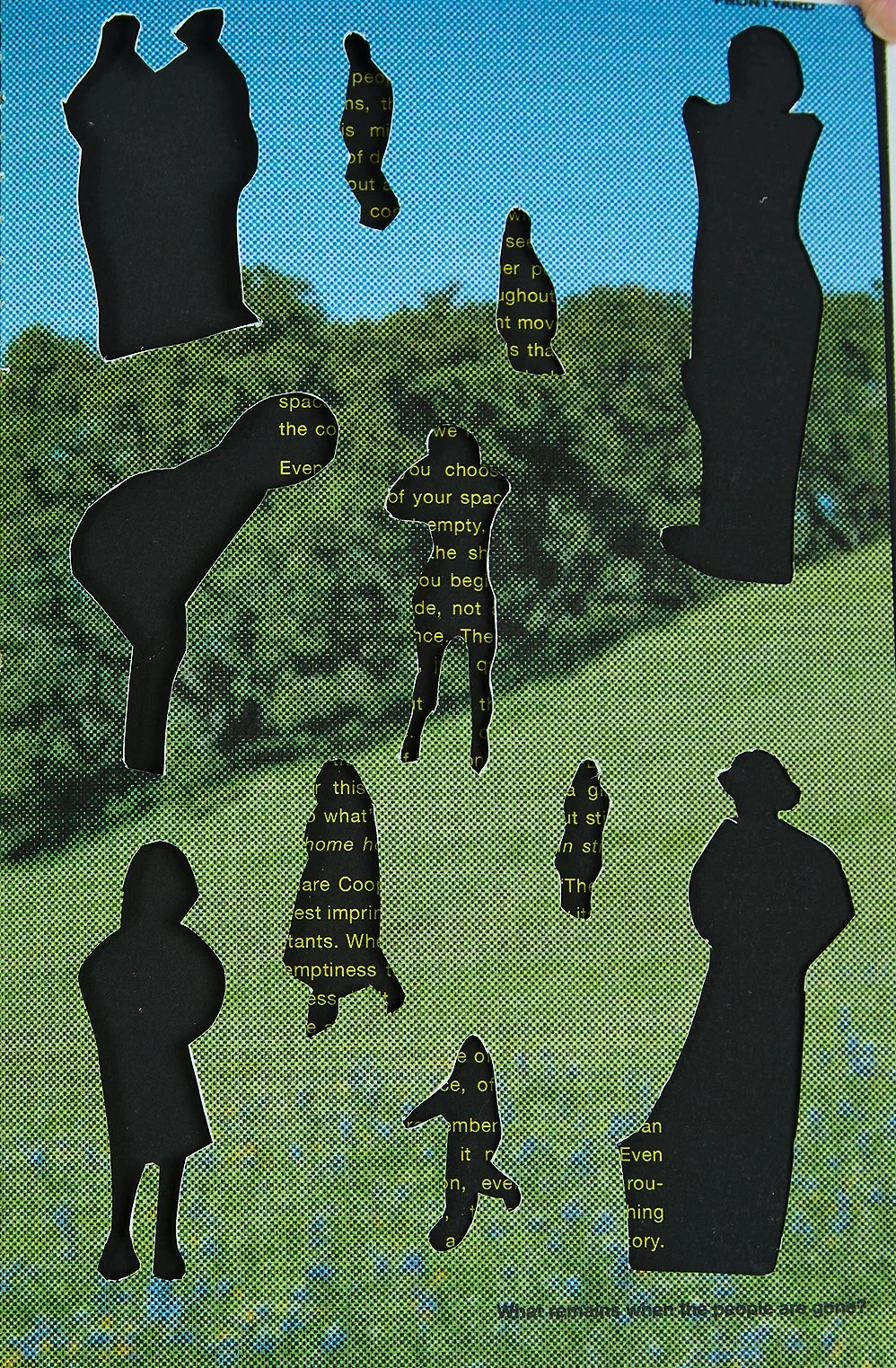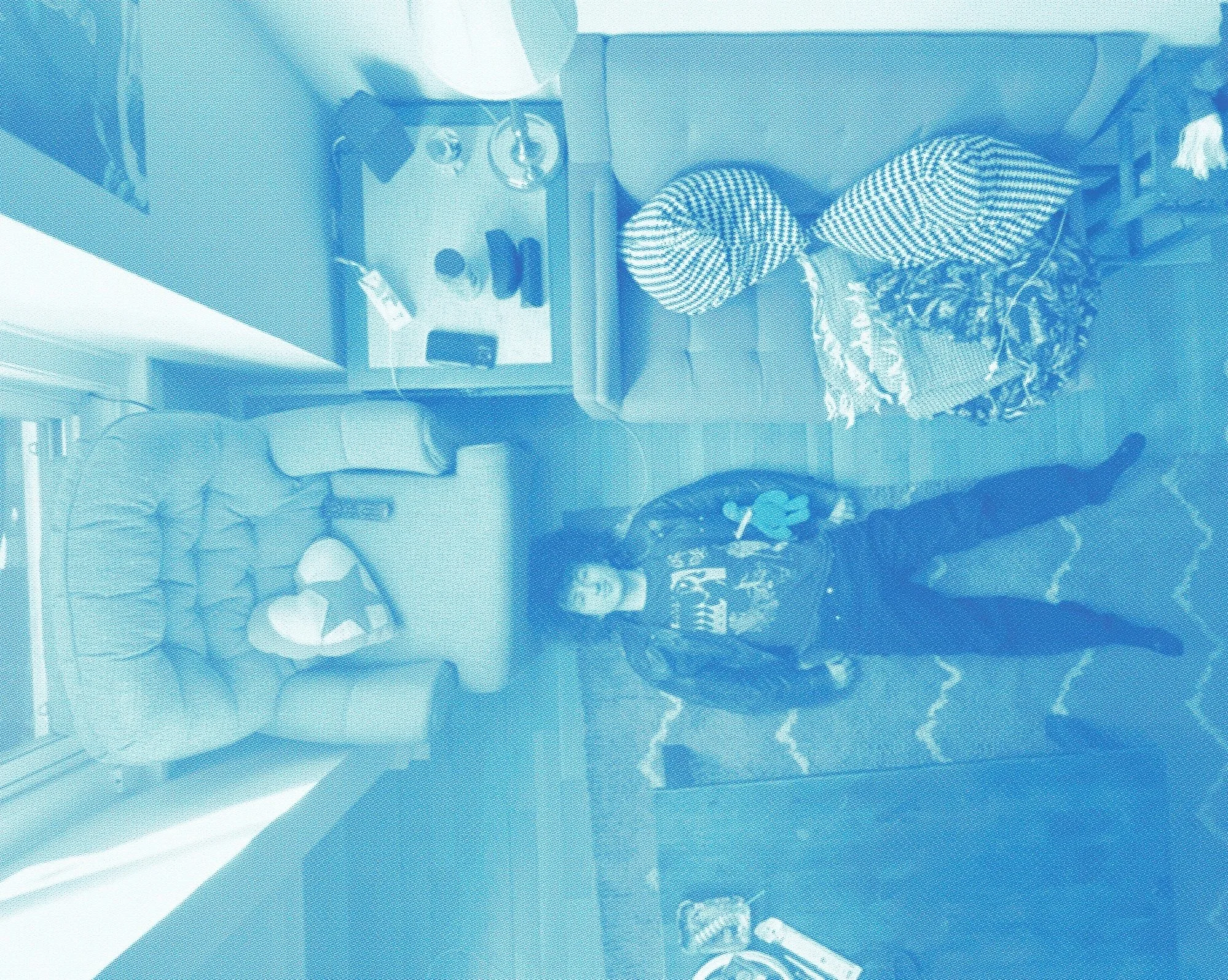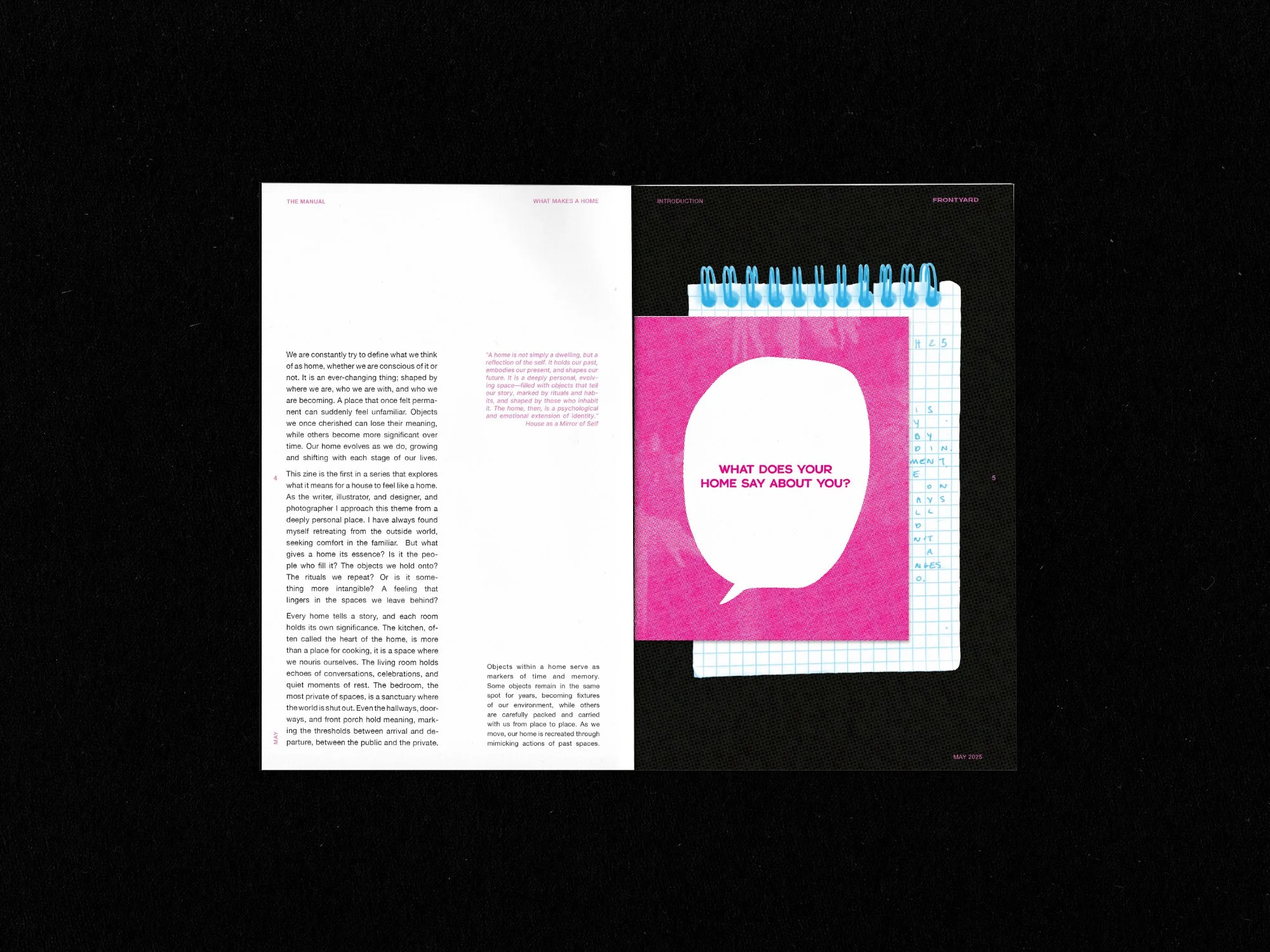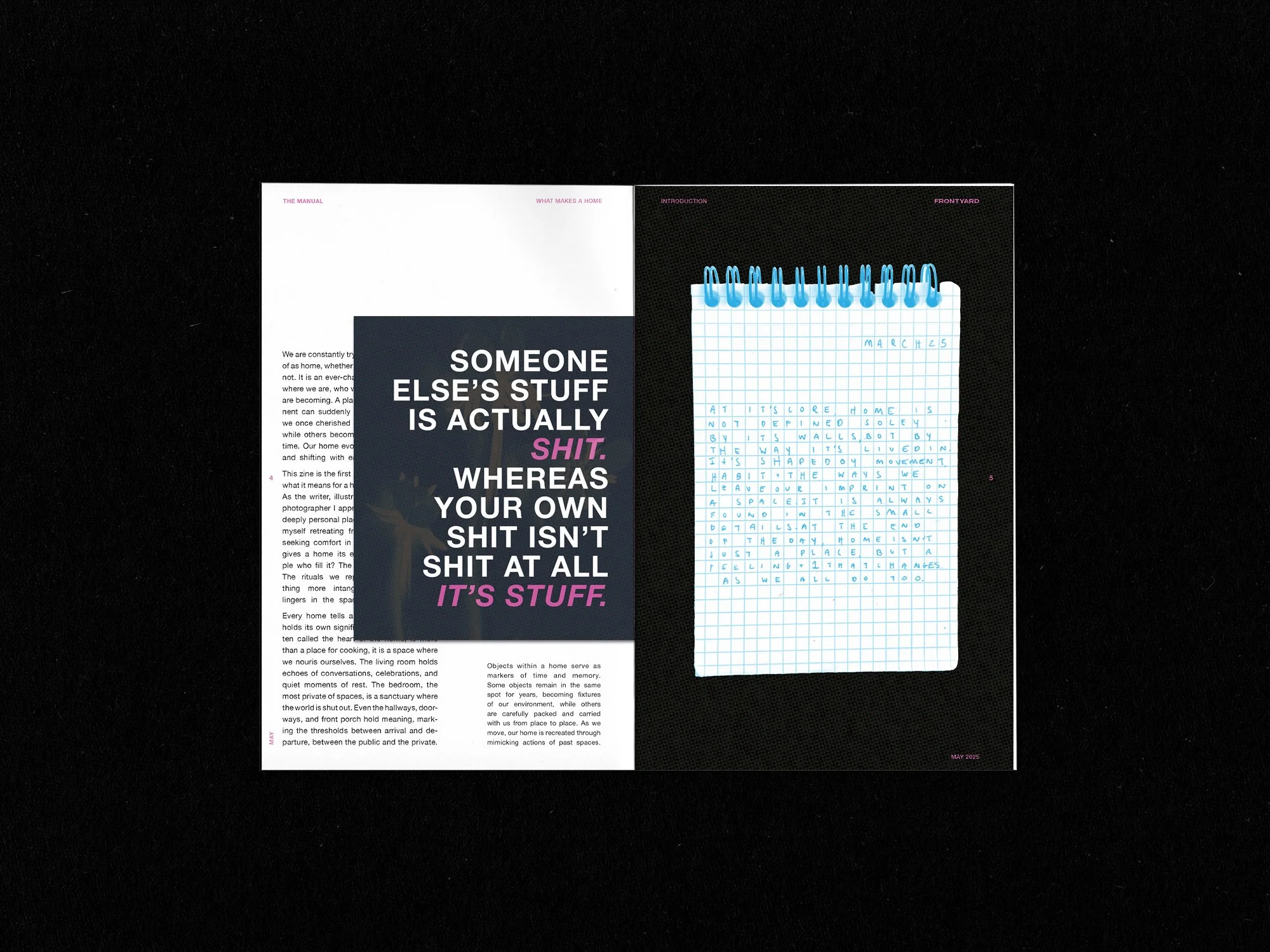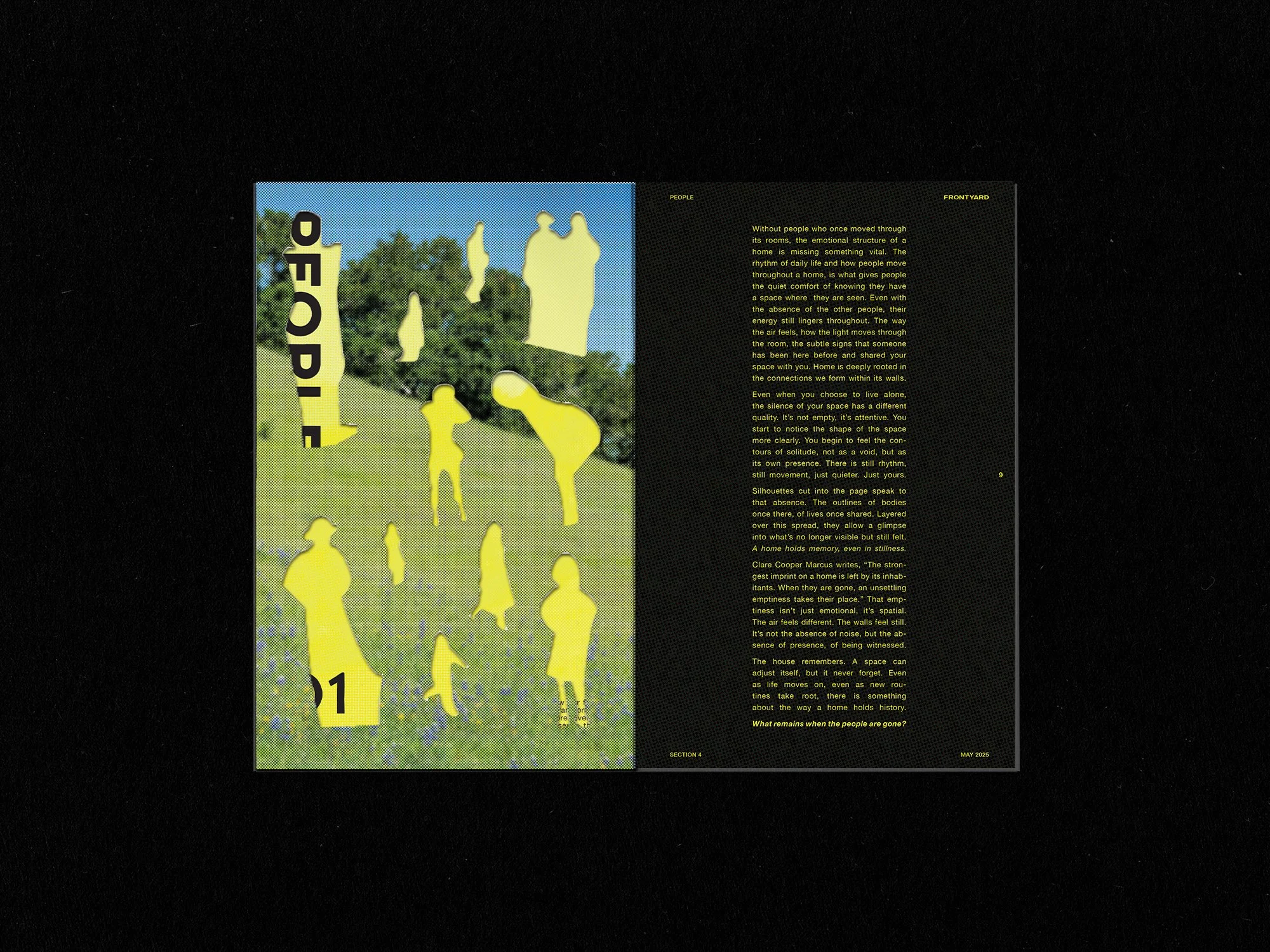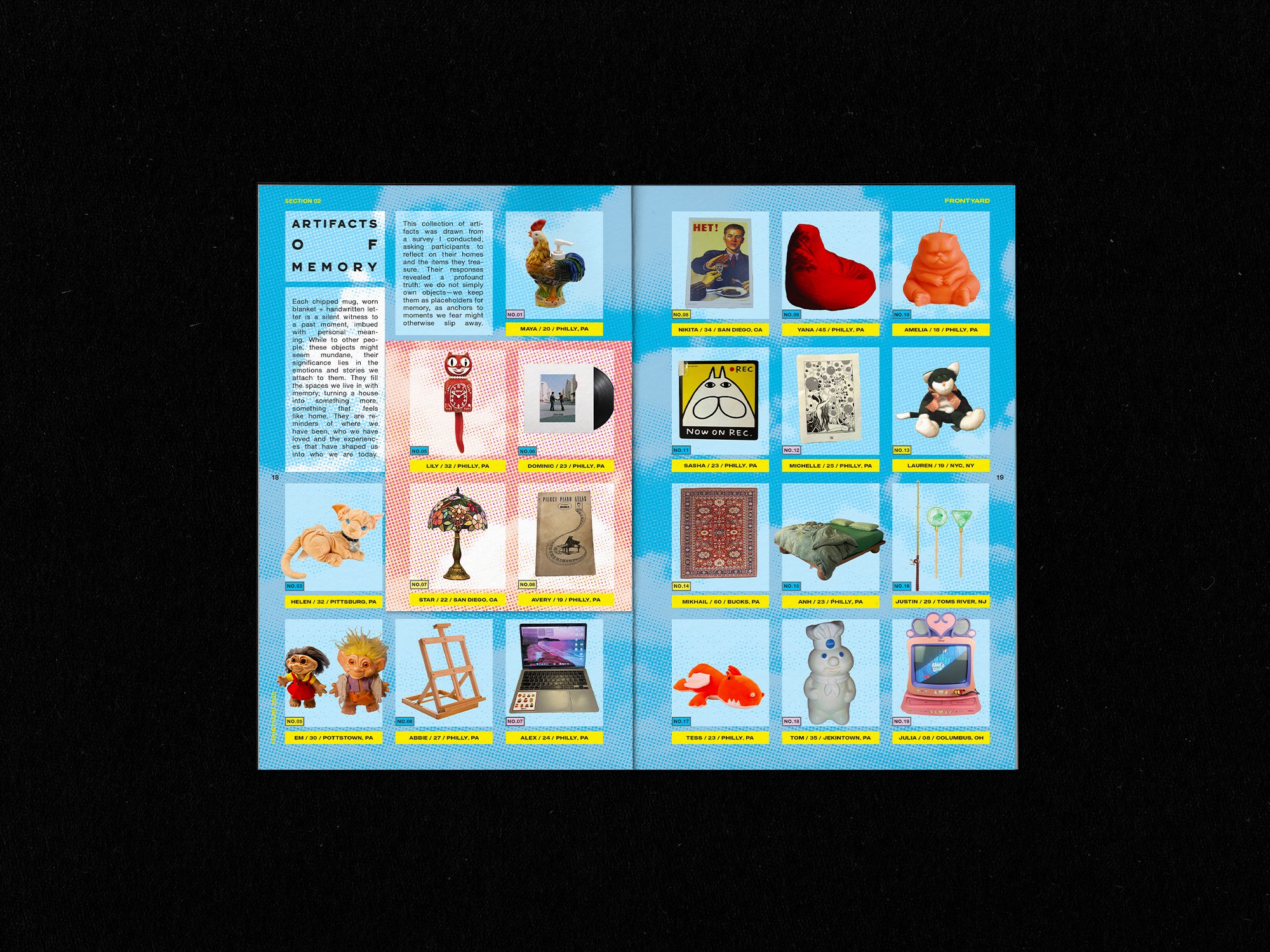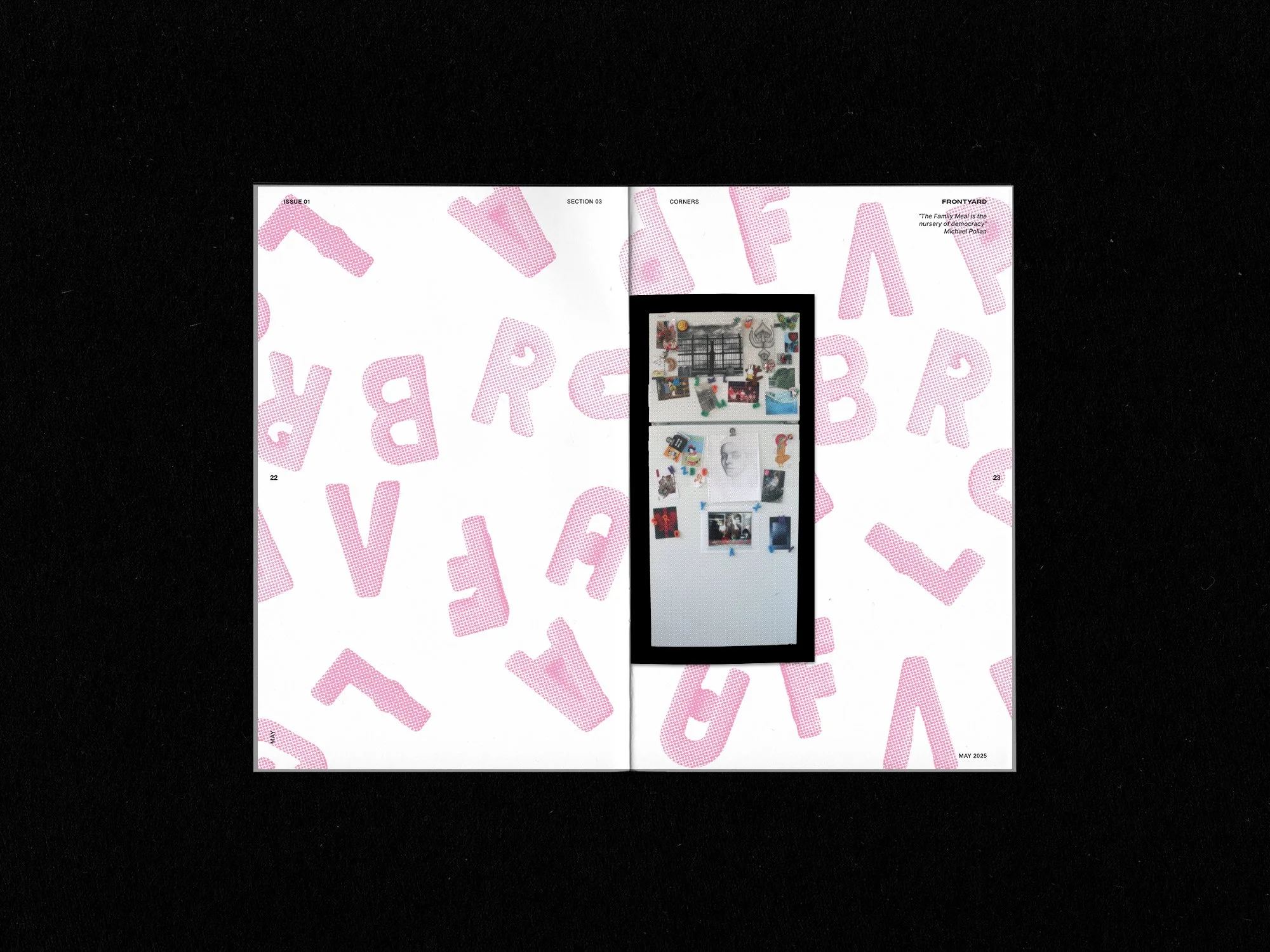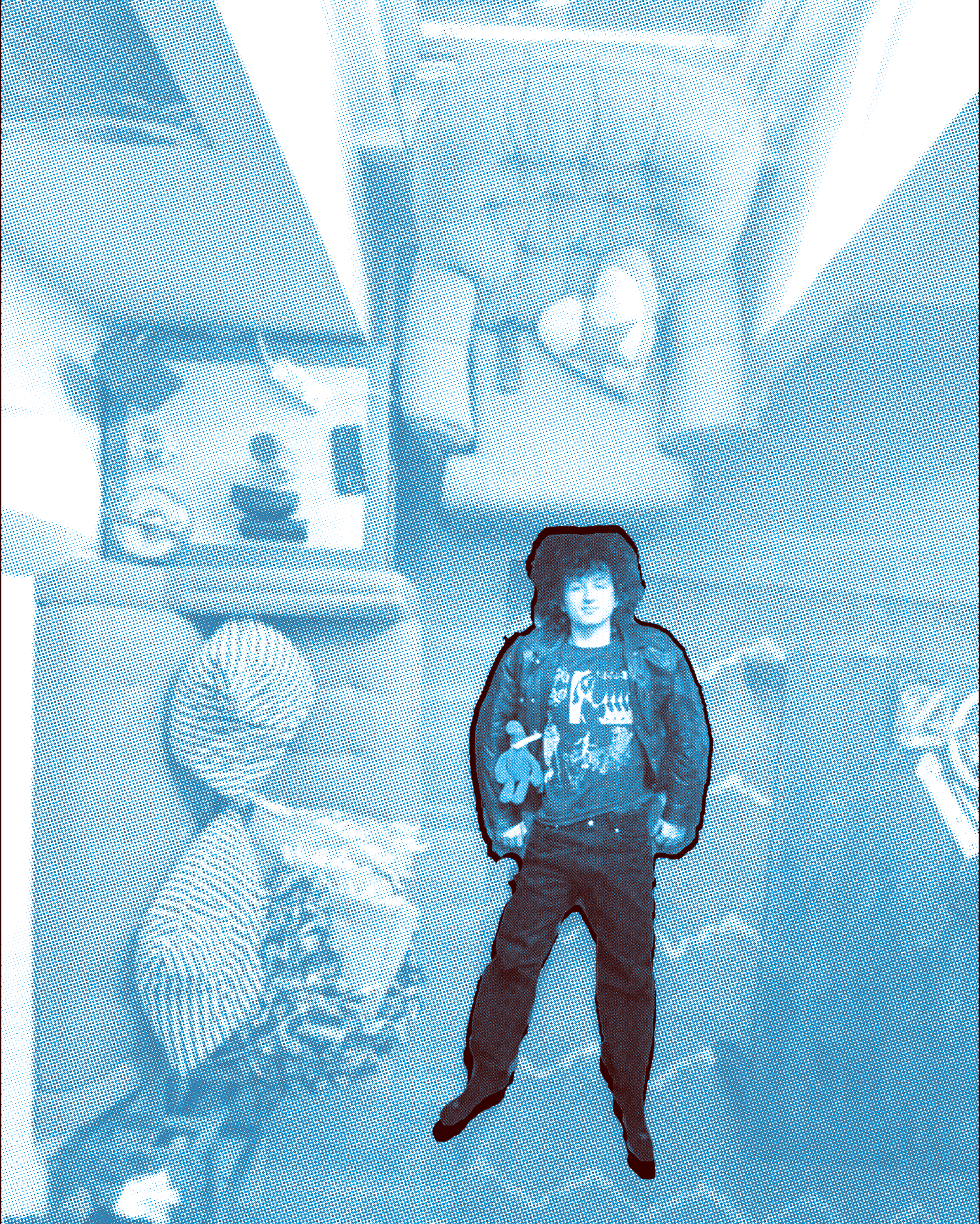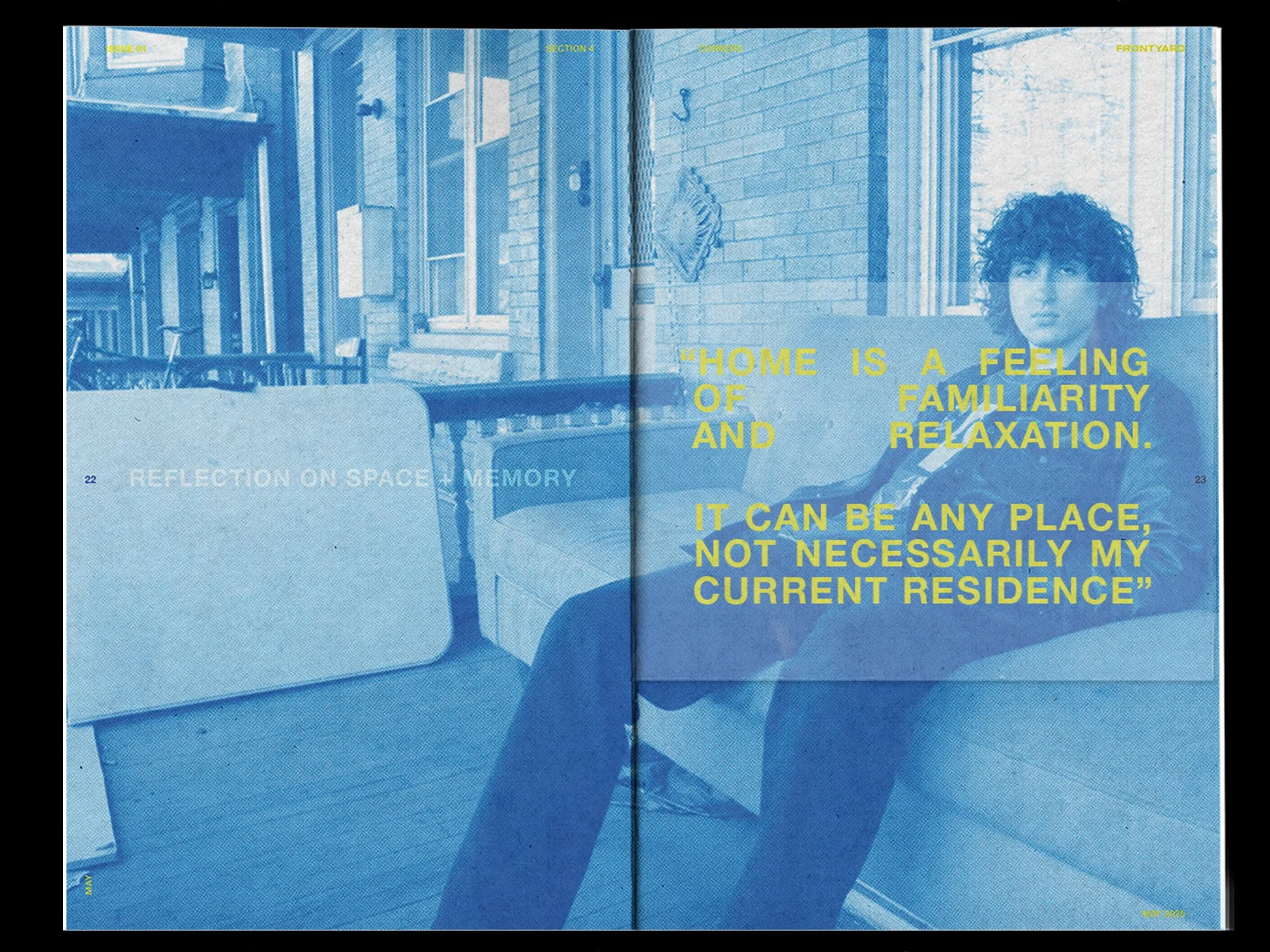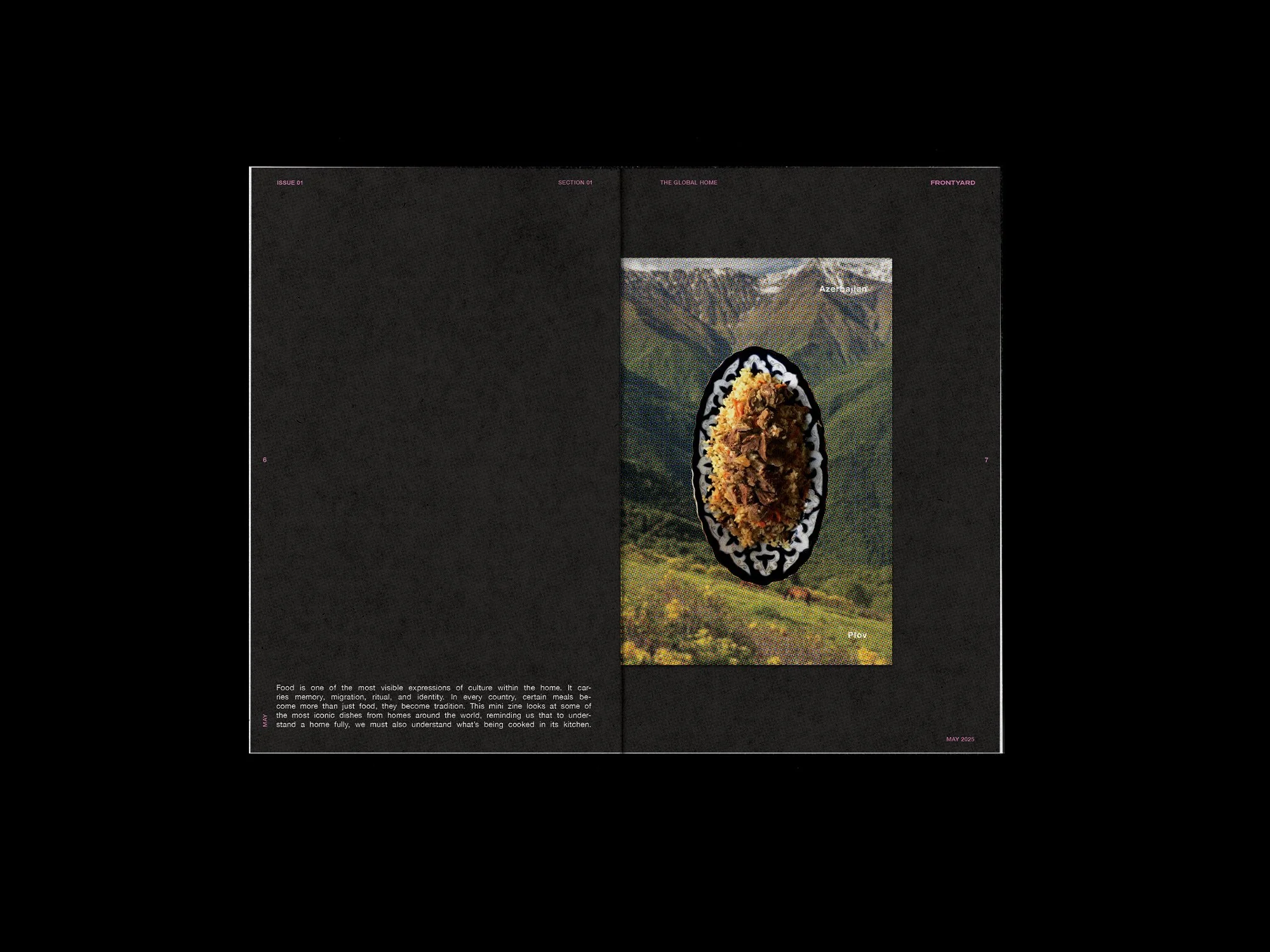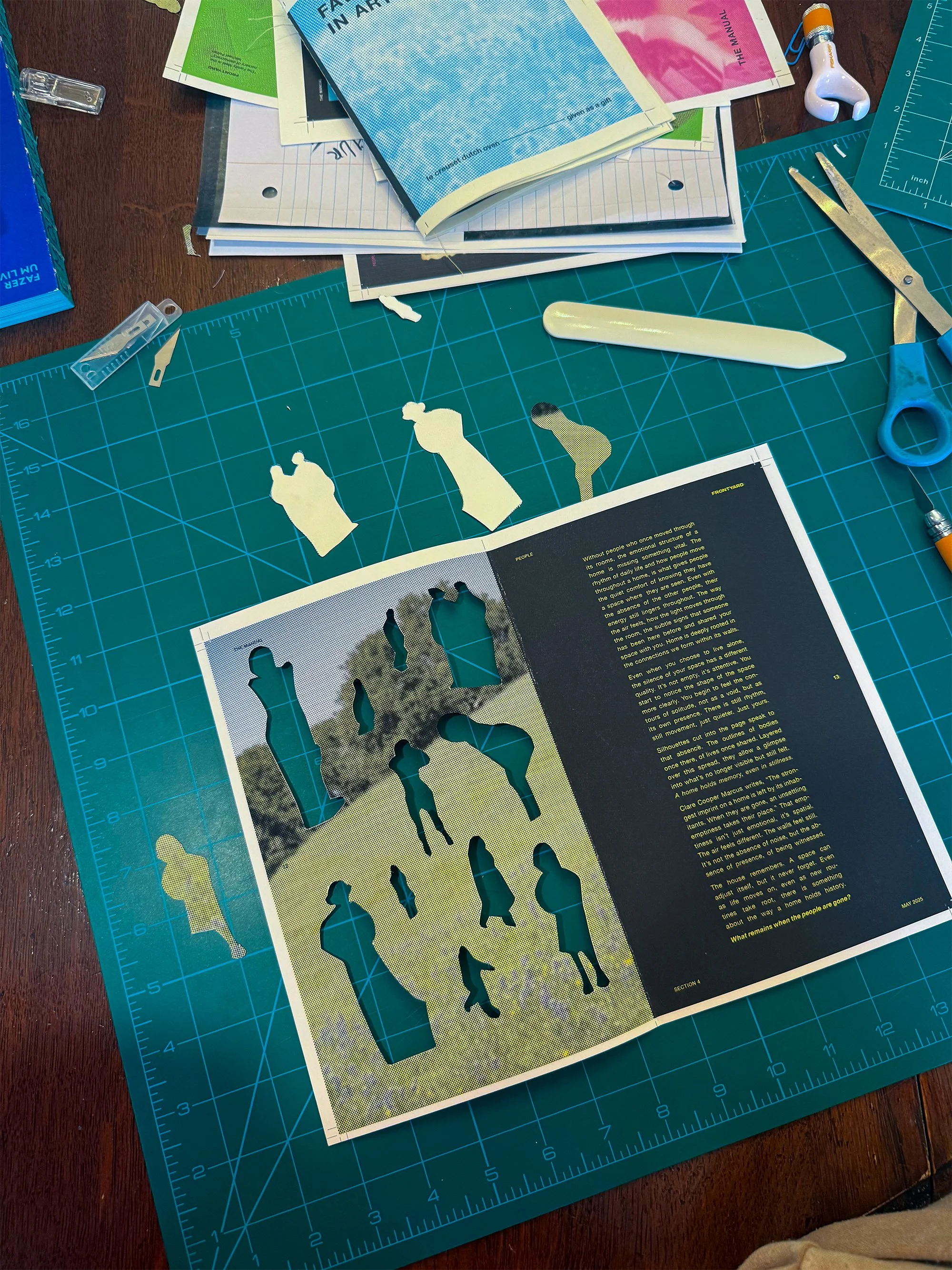Project Type
Publication Series (BFA Thesis)
2025
Discipline
Editorial Design
Art Direction
Ilustration
Photography
Bookbinding + Prinitng
Frontyard is a zine series housed in a modular acrylic home. Each issue documents a different person’s space, showing how identity lives through the things we keep and the places we live. The project reestablishes print as a meaningful way to record personal stories in a digital culture. Every part was designed, printed, and assembled by hand to emphasize craft and permanence.
FRONTYARD
define your sense of home
THROUGH OTHERS
Frontyard positions print as a relevant means of documenting personal spaces and the identities shaped within them.
Concept + Application
Building from Designing the Artist, a project where I created an artist whose work questioned confinement and value in art, Frontyard expands that idea through personal space. It examines how identity and meaning form through the things we live with and the environments we create. Familiarity and repetition shape how we define home and, in turn, ourselves.
The design expresses this through an acrylic house that functions as both container and display. Each zine adds a new story, turning everyday spaces into records of personal experience. Choices in material and assembly highlight imperfection and craft, reinforcing print as a medium grounded in touch and time.
How It Works
Initial Release
Building the Archive
Each new issue focuses on one person’s home in a different city. Issues are printed once, then archived, giving people full control over which locations make up their collection.
The first drop includes both zines and the acrylic house. This is the only release where the house is sold together with the printed issues.
Two Zines
Frontyard launches with two zines: Zine 01, The Manual, and Zine 02, Philadelphia.
Research
Before any design work began, I spent several weeks collecting visual and written research to understand how home is represented and how those representations shape perception. The text and imagery needed to speak to Frontyard’s theme while standing on their own as personal, grounded narratives.
Most discussions about home center on architecture, market value, or ownership. I focused instead on the everyday habits and objects that shape how people live. To ground that perspective, I created a survey asking participants to share items from their homes and describe what home means to them. Their responses informed the first zine, a manual that sets the foundation for the project. The second zine expands on this through interviews and photographic documentation of one home and its surroundings, connecting the personal space back to the city.
read more
Frontyard draws from traditions of documentary photography that explore how ordinary objects reflect personal identity. Peter Menzel’s Material World photographed families with all their belongings, revealing how possessions tell quiet stories about people’s lives. Sergei Stroitelev’s portraits of handbags, Mark Menjivar’s refrigerators, and Gabriele Galimberti’s Toy Stories extend that idea by showing how what we keep reflects who we are. The project also references writing that examines the relationship between people and their environments. Daniel Miller’s Home Possessions (2001), Roderick J. Lawrence’s What Makes a House a Home? (1987), and Clare Cooper Marcus’s House as a Mirror of Self (2006) informed how Frontyard approaches design as a way to document personal space through print and the physical act of keeping.
References: Peter Menzel, and Sergei Stroitelev
the manual
The Manual
Zine 01
The first zine defines Frontyard’s purpose and turns the research into a format the rest of the series follows. It lays out how information should appear on the page and sets the approach for how text and images work together.
The cover uses acetate to build a physical layering system. Each sheet separates the place, the objects, and the person, mirroring how layers exist within a home. This structure carries into the later issues, which begin with an object printed on acetate over the person in their space.
Cover Design System
Sections
People
What remains when people leave a space shows how presence lingers and shapes the feeling of a home.
Things
A survey of personal possessions and the study of one junk drawer show how meaning forms in what people keep and what they overlook.
Corners
The kitchen and bathroom reveal identity through routine by what stays in the fridge and medicine cabinet, often saying more than any curated space.
philadelphia
Philadelphia
Zine 02
The second zine moves from defining the project to putting it into practice. It focuses on one home in West Philadelphia and shows how the earlier approach functions in a lived space without overwhelming it.
Meet Arthur,
a student living in West Philadelphia.
This project was born in Philadelphia. I know this city, and living here shaped how I approached the work.
Photoshoots, interviews, and collage shape this issue, giving the home a clear sense of character without overwhelming
the content.
challenges
Production complexity
Hand binding, layered printing, and half sheets
required constant adjustments and reprints.
Balancing text and image on every page
Each spread needed to work if someone read only the text
or only the visuals. Achieving that balance was the hardest
part of the layout process.
Building interaction that felt natural
Hand building, printing, and layering took time and
often had to be redone.
insights
Physical media still carries weight
People respond to work they can hold, especially
when the materials and format reinforce the idea.
Everyday objects reveal more than expected
Small items consistently showed routines and priorities that
shaped the larger narrative.
Sharing personal space requires trust
People are curious about how others live but selective
about what they show. That shaped how I photographed
and edited the work.
Personalization through Construction
Frontyard taught me how to work at two scales at once: the intimacy of one person’s home and the larger framework needed to share it with others. Building this release showed me how design can hold lived detail without reducing it. The project moves forward with that goal in mind.

